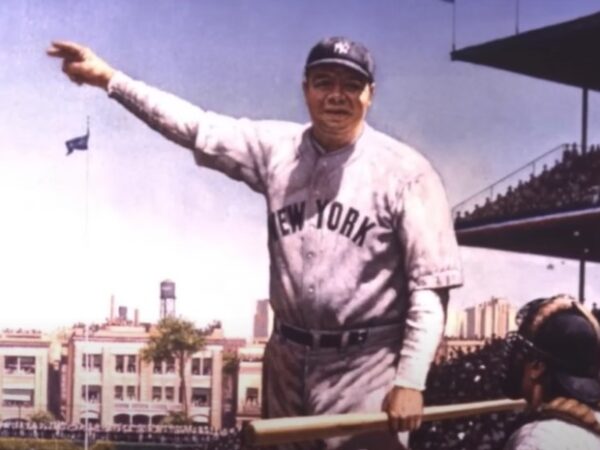How Long Is a Baseball Game? Everything You Need to Know

Baseball has been a beloved pastime for over a century, captivating fans with its mix of strategy, athleticism, and unpredictability. But for those stepping into the world of baseball, one question often arises: How long does a baseball game actually last? Whether you’re a passionate fan planning to attend your first live game or simply curious about the sport’s unique rhythms, understanding the length of a baseball game is an essential part of appreciating it.
This post will break down the average length of a game, explain the factors that influence its duration, and provide historical insight into how game lengths have evolved over time.
Average Length of a Baseball Game
On average, a Major League Baseball (MLB) game lasts approximately three hours. However, game times can range from as short as 2.5 hours to as long as 4 hours or more, depending on various factors. While professional MLB games operate without a strict time limit, the nature of the game’s inning-based structure contributes to this variability.
A standard game consists of nine innings, with each inning divided into a top half (when the visiting team bats) and a bottom half (when the home team bats). Each team has the opportunity to record three outs per inning. Since the game only ends after all nine innings are completed—or extended into extra innings in the event of a tie—its length depends on factors like the pace of play, number of substitutions, and scoring scenarios.
Minor League and Youth Baseball
It’s worth noting that not all levels of baseball follow the same timeline as the MLB.
- Minor League Games often clock in at a slightly shorter 2.5–3 hours on average.
- Youth Baseball Games, like Little League, are intentionally kept shorter, with most games limited to six innings or lasting approximately two hours.
The structure and intensity of each league play a pivotal role in determining their overall game times.
Factors Affecting Game Length
Game length in baseball is anything but random. A variety of factors contribute to how long fans can expect to stay in their seats or glued to their screens. Let’s explore the most impactful variables.
1. Pitching Changes
One of the most significant contributors to game length is the number of pitching changes. Managers often strategically switch pitchers during critical moments to gain a tactical advantage, especially late in games. A typical pitching change can take several minutes, as the new pitcher warms up on the mound while broadcasters fill the break with commercials. The more changes a team makes, the longer the game becomes.
2. Commercial Breaks
Televised games, particularly in the MLB, feature commercial breaks between innings, as well as during mid-inning pitching changes. With broadcasts adding a few minutes after every half-inning, this time can accumulate over the course of nine innings.
Example:
Each commercial break is roughly 2–3 minutes long. Over the nine innings of play, these breaks alone can account for about 36 minutes of the total game time.
3. Offensive Productivity (Runs Scored)
The more runs (or points) scored during a game, the longer it typically lasts. This is because every base hit, walk, and home run requires that additional pitches are thrown. Exciting innings with extended rallies can add significant time to a game. High-scoring games are thrilling but tend to stretch beyond the average three-hour mark.
4. Replay Reviews
The introduction of instant replay technology, while improving fairness, has added another layer of time consumption. Managers can challenge certain plays, prompting umpires to review video footage. Each review takes anywhere from 1–5 minutes, depending on the complexity of the call.
5. Extra Innings
If a game is tied after nine innings, it proceeds to extra innings to determine a winner. Extra innings essentially operate as sudden-death periods where the first team to outscore the other wins. These additional innings can extend games by 30 minutes (or longer) depending on pitching duels or prolonged scoring opportunities.
6. Pace of Play Rules
To combat some of these challenges, MLB introduced a range of pace-of-play regulations in recent years.
- Pitch Timer: Starting in the 2023 season, MLB implemented a pitch clock, requiring pitchers to throw within 15–20 seconds (depending on baserunners).
- Limits on Mound Visits: Managers and coaching staff are now restricted to a limited number of mound visits per game.
Although these measures aim to reduce game length and increase overall engagement, their impact is still being analyzed.
Historical Context of Game Length
Baseball hasn’t always followed such extended timelines. The length of games has gradually increased over the decades, reflecting changes in strategy, technology, and media influence.
Early Baseball (20th Century)
Baseball in the early 20th century was faster-paced, with games averaging under 2 hours. Teams relied more on pitching and defense, and scoring was relatively low. Additionally, the absence of extensive broadcast coverage meant there were no commercial interruptions.
Notable Example:
- Game lengths in the 1920s averaged around 1 hour 50 minutes.
Modern Baseball (21st Century)
Throughout the late 20th and early 21st centuries, game durations began to extend as the sport evolved. Rising offensive productivity, strategic pitching changes, and the integration of media commercials all played a role. Today, MLB games average around 3 hours 5 minutes, even with pace-of-play adjustments implemented.
Why the Length of a Baseball Game Matters
Understanding the average duration and contributing factors of a baseball game is important for fans, broadcasters, and teams alike. For fans, knowing the typical timeframe helps set expectations when attending a live game or planning a TV viewing experience.
It also illuminates the strategic complexity of the sport—where every minute can be filled with moments of tension, excitement, and thrill. Whether you’re a long-time advocate of America’s pastime or someone just discovering the game, the unpredictability of game length is part of what makes baseball uniquely rewarding.
Wrapping Up
Baseball isn’t just a game—it’s an experience. While the average game lasts around three hours, this timeline is less about ticking clocks and more about the ebb and flow of the action. Factors like pitching changes, scoring intensity, and even historical trends shape your time in the stands or on the couch.
Want to better understand the sport’s nuances and stay updated on its evolution? Explore our in-depth guides and community resources tailored to passionate baseball fans like you.











